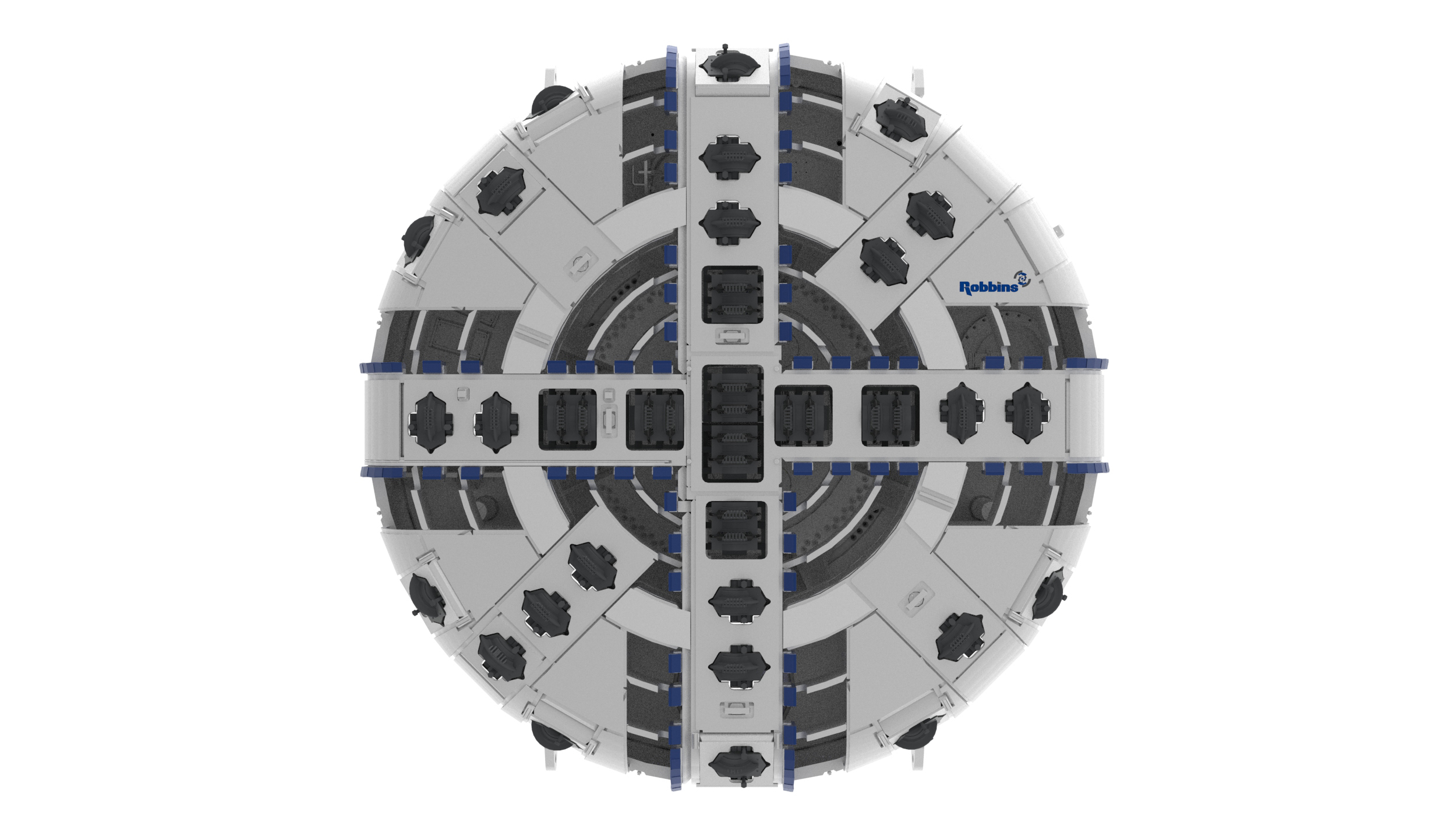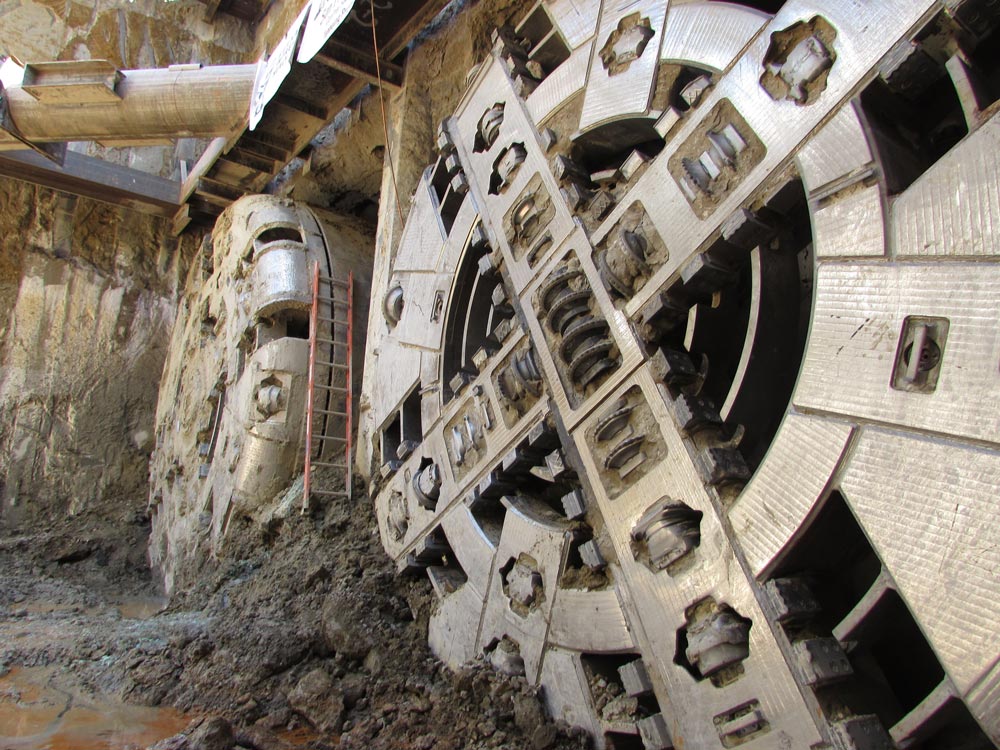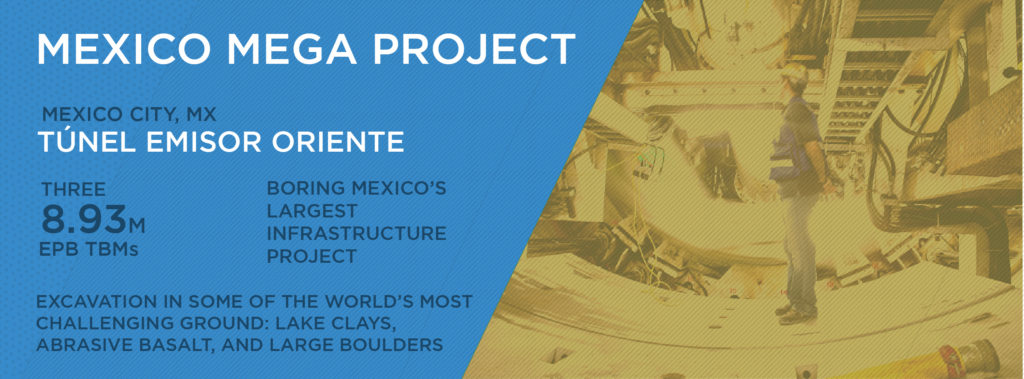Rail project, Central Subway
San Francisco, California, USA, two 6.3 m diameter EPB TBMs
Is an EPB TBM right for your project? Find out now
EPB TBMs
EPB TBMs: Download the spec sheet
Featured Case Study
Moscow Metro
Download the White Paper
Experts Weigh in on EPB Cutterhead Design
Insights in the Industry:
Read the Robbins Blog
Our History
A Legacy of Innovation
A Solution for Every Condition: Search our Project Database
Project Map
Careers
Our machines change the world. Join the team that makes them.
If the geology of your tunnel ranges from soft soils to weathered rock, then a Robbins Earth Pressure Balance Machine (EPBM) is the correct technical solution for your project. This is particularly true when your project is located in an urban environment and ground surface subsidence cannot be tolerated.
EPBMs are utilized in the construction of rail tunnels, metropolitan subway systems, highway tunnels, and other projects where the tunnel will be constructed either partly or completely in soft soil beneath the water table.
Robbins has integrated over 50 years of TBM design and jobsite experience into our EPBMs. Nobody has a wider range of experience designing innovative machinery to cope with difficult underground conditions. Our engineers will tailor your EPBM to handle the specific challenges of your project. From “Smooth Flow” cutterheads that reduce friction to super-reliable back-filling systems and Variable Frequency Cutterhead Drives, Robbins has taken the traditional EPB design to the next level.

Earth Pressure Balance Machines (EPBMs) are shield machines specially designed for operation in soft ground conditions containing water under pressure. Loose sedimentary deposits with large boulders and a high water table will challenge ordinary TBMs, but not Robbins EPBMs. Robbins EPBMs have an articulated shield that is sealed against the pressure of water inflows up to 10 Bar. Robbins EPBMs control the stability of the tunnel face and subsidence of the ground surface by monitoring and adjusting the pressure inside the cutterhead chamber to achieve a balance with the pressure in front of the cutterhead, hence the name “Earth Pressure Balance.”
The working area inside the EPBM is completely sealed against the fluid pressure of the ground outside the machine.
A screw conveyor removes the fluidized muck behind the cutterhead and in front of the pressure bulkhead. The screw conveyor’s speed and discharge rate is controlled by the operator and is used to control the pressure at the working face and to match the muck discharge rate to the advance rate of the EPBM.
 The articulated joint between the forward shield and tail shield is equipped with a high pressure seal that allows angular movement between the shields and prevents water from seeping into the interior of the EPBM.
The articulated joint between the forward shield and tail shield is equipped with a high pressure seal that allows angular movement between the shields and prevents water from seeping into the interior of the EPBM.
The EPBM erects the segmented tunnel lining sequentially after each push. Specially designed high pressure seals in the tail shield effectively seal the machine to the outside of the tunnel lining and create a barrier against ground pressure.
When it becomes necessary to enter the cutterhead chamber to inspect the cutterhead or change cutting tools, the workers can safely enter through a manlock while compressed air is used to maintain earth pressure balance to support the working face.
EPBMs can be steered through incredibly small turn radii when necessary by employing the articulation joint and the copy cutter mounted in the cutterhead. Robbins engineers will calculate the correct amount of copy cutter extension and the articulation angle required for the particular radius requirements of a given tunnel.
“The design of the machine, cutterhead, and cutter setup from Robbins shows, after the left line breakthrough at 1,400 m, the wear of the disc cutters was only 4.1 mm, and therefore cutter replacement was unnecessary before it started on the right line tunnel.”
– Li Quan She, Project Manager, CRCC 23rd Bureau, Chengdu Metro Project Line 2

Robbins designs EPBMs to meet the criteria of each specific project, including the geologic conditions, tunnel design, construction plan, project schedule, site logistics and many other factors. When you contact Robbins, we review your project specifications to determine the best machine for your project. In some cases, an entirely new tunnel boring machine will be the answer. On other projects, the best decision may be to refurbish an existing TBM, to save you time and money.
To learn more about Robbins’ past projects, search our Project Solutions section. This section will give you an idea of what history-making successes we have accomplished in the past and how our innovative solutions can make your next project a success.
Whether you are in the planning phase of tunnel construction or about to bid on a project, our engineers can help you identify the best solution to achieve your objectives. For more information, complete our on-line inquiry form or contact Robbins at your nearest location.

 Close
Close